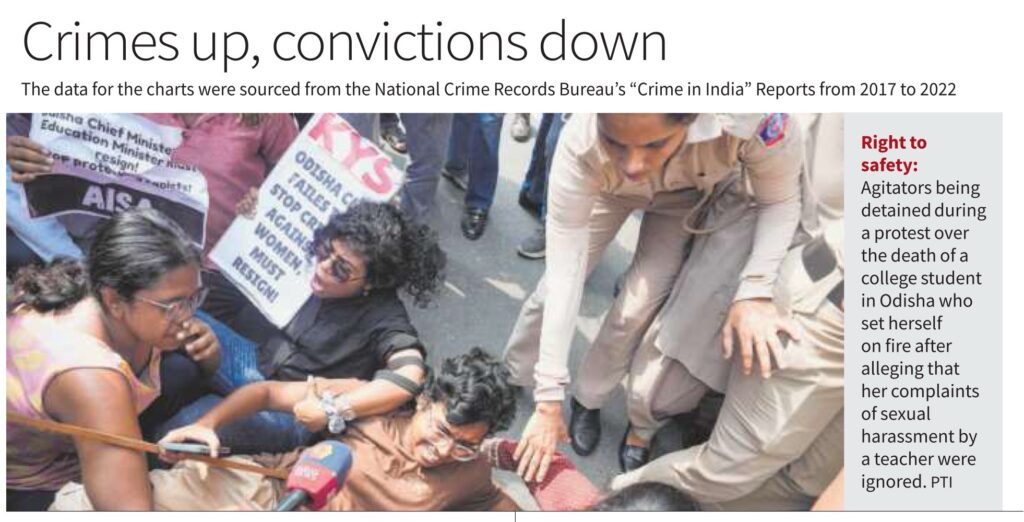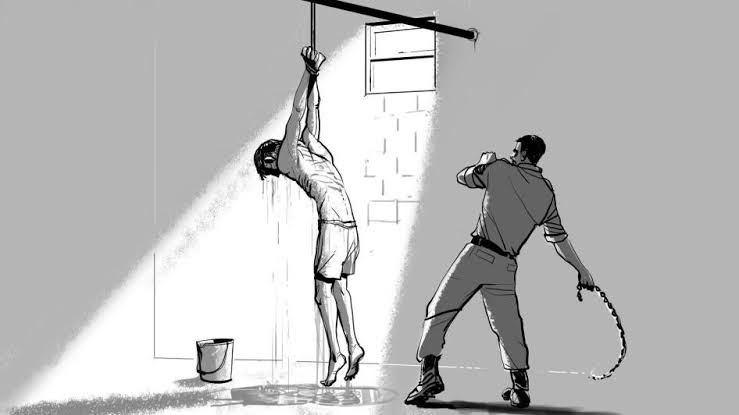
The article highlights the alarming rise in crimes against women in Odisha, coupled with poor conviction and chargesheeting rates, reflecting the state’s inadequate institutional response. Recent cases include brutal assaults, abductions, and suicides triggered by harassment, revealing a systemic failure in justice delivery. Data from NCRB shows that Odisha recorded over 5,000 police cases of crimes against women in 2022, one of the highest rates in India, with 33 cases per one lakh population. Despite this, Odisha ranked among the lowest in conviction rates, averaging just 8.2% between 2017 and 2022, and was consistently below national averages. Its chargesheeting rate was 71.4% in 2022, far below other high-crime states like Haryana and Rajasthan. Courts in Odisha also show inefficiency, with low case disposal rates and high pendency. Graphs comparing Odisha with other states like Delhi and Assam illustrate this dual burden of high crime and weak legal follow-through. The article concludes that Odisha’s law enforcement and judiciary must take urgent, systemic steps to restore faith in justice and protect women’s rights and safety.

📌 Value Addition for Mains Answers:
Relevant Data:
Odisha’s conviction rate in 2022: 9.3% (National Avg: ~26%)
Chargesheeting rate in Odisha: 71.4% (Among the lowest)
Police cases of crimes against women in Odisha: 5,010 in 2022 (high per capita rate)
Legal Provisions:
Article 15(3) – Special provisions for women
Article 21 – Right to life with dignity Criminal Law (Amendment) Acts – 2013 & 2018
Section 173 CrPC – Timely filing of chargesheet Important
Schemes:
One Stop Centres (OSC)
Nirbhaya Fund
Fast Track Special Courts (FTSC)
Court Judgments:
Vishakha v. State of Rajasthan – Sexual harassment guidelines
Lalita Kumari v. Govt. of UP – Mandatory FIR in cognizable offences
📝 GS Paper 2 – Governance, Constitution, Polity, and Social Justice
1. “High incidence of crimes against women, combined with poor conviction and chargesheeting rates, reflects a systemic failure of justice delivery.” In light of recent data from Odisha, discuss the challenges and suggest reforms.
(250 words)
2. Examine the effectiveness of India’s criminal justice system in addressing crimes against women. Illustrate your answer with reference to Odisha’s performance on key legal metrics.
(250 words)
3. “Police responsiveness and judicial efficiency are key pillars of women’s safety in India.” Discuss with examples from states with high crime rates but low conviction, such as Odisha.
(150 words)
4. Highlight the implications of low conviction rates in crimes against women on public trust and gender justice. How can state governments reform police and prosecution systems?
(150 words)
🧭 GS Paper 4 – Ethics, Integrity & Aptitude
5. “Justice delayed is justice denied, especially for vulnerable groups like women.” Discuss this ethical dilemma in the context of rising crimes against women and judicial pendency in Odisha.
(150 words)
6. Evaluate the ethical responsibilities of public officials, law enforcement agencies, and the judiciary in ensuring justice for women victims of violence.
(250 words)











